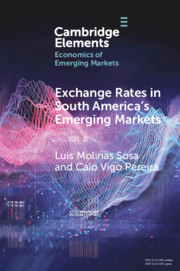Element contents
Exchange Rates in South America's Emerging Markets
Published online by Cambridge University Press: 22 June 2020
Summary
Keywords
- Type
- Element
- Information
- Online ISBN: 9781108893671Publisher: Cambridge University PressPrint publication: 16 July 2020
References
- 12
- Cited by

